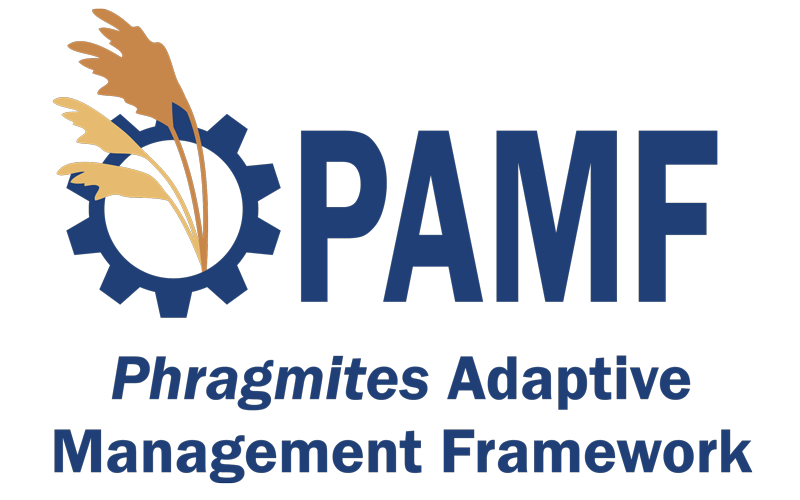

PAMF Technical Working Group
PAMF was developed by a Core Science Team composed of researchers and staff at the USGS, University of Georgia, and the Great Lakes Commission. The Core Science Team worked closely with a Technical Working Group (TWG), which was made up of experts in Phragmites management representing different stakeholder values, priorities, and perspectives. Involving the TWG at an early stage ensured that the final framework reflected the needs and objectives of end-users. Members of the TWG remain involved in PAMF today. Although their roles have changed, these individuals continue to volunteer their time and offer their advice and expertise. PAMF could not exist without them.
We would like to acknowledge the following individuals and organizations:
Lisa Brush
Executive Director, The Stewardship Network lbrush@stewardshipnetwork.org

Lisa Brush has been leading collaborative conservation initiatives in the nonprofit environmental sector for over two decades. With The Stewardship Network, she has engaged thousands of professionals and volunteers in identifying community and conservation needs. She has been involved in all aspects of organizational management including foundation/agency relationships, grant funding, budget tracking, contract negotiation, implementation, accountability, reporting, and staff development. Lisa has facilitated strategic planning sessions, focus groups, citizen task forces, community visioning sessions, and public involvement and feedback meetings with groups of all sizes. Lisa emphasizes tried-and-true, in-person methods of bringing people together augmented by cutting-edge online technology. Specific to Phragmites, Lisa has done herbicide applications and post-herbicide burns as well as helped develop treatment plans, cross-boundary collaborations, bundled contracting for treatment, and outreach on impacts and control options. Among other academic credentials, Lisa has a master’s from University of Michigan’s School of Natural Resources and Environment.
Jennifer Dunn
Biologist, Division of Water – Great Lakes Programs, New York State Department of Environmental Conservation jennifer.dunn@dec.ny.gov

Jennifer Dunn is a Biologist in the Great Lakes Program at the New York State Department of Environmental Conservation. She works with federal, local, and non-government partners on the Areas of Concern and Lakewide Action and Management Plans for Lake Erie and Lake Ontario in New York. Additionally, Jennifer is on the Steering Committee for the Western New York Partnership for Regional Invasive Species Management. Invasive Phragmites australis is a continuous issue they face for all of their habitat projects, and PAMF has been and will continue to serve as a resource for habitat project design across their programs. Jennifer received her master’s in Ecology, Evolution, and Behavior from the University of Buffalo.
Anne Garwood
Wetland Monitoring and Coastal Wetland Specialist, Michigan Department of Environmental Quality GarwoodA@michigan.gov

Anne Garwood is the Wetland Monitoring and Coastal Wetland Specialist for the Water Resources Division in the Michigan Department of Environmental Quality. Anne is the lead staff on Michigan’s wetland monitoring efforts, including planning and implementation of monitoring projects, and serves as a co-principal investigator on the Great Lakes Coastal Wetland Monitoring project. Through this work and more, Anne provides technical expertise and assistance on protection, management, and restoration of Great Lakes coastal wetlands to regulatory staff, other state agencies, and the general public. She also works on climate change adaptation for Michigan’s wetlands and waters, and on aquatic invasive species management efforts through participation on the Michigan Invasive Species Core Teams.
Dr. Janice Gilbert
Executive Director, Invasive Phragmites Control Centre janicegilbert@rogers.com
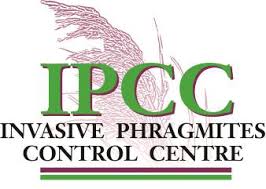
Dr. Janice Gilbert is a leading expert on invasive Phragmites control. She currently manages the Invasive Phragmites Control Centre which is a non-profit organization operating in Ontario. This entity operates a unique cutting program which uses amphibious machines to drown the plants. Her organization also provides Phragmites advice, develops management plans, and manages all aspects of Phragmites control for a number of organizations, municipalities, cities, provincial and federal agencies and NGOs. She is a Scientific Advisor for the Great Lakes Phragmites Collaborative and founded the Ontario Phragmites Working Group in 2011 to promote effective, efficient, and environmentally responsible management of invasive Phragmites in Ontario. Janice has published over 20 Phragmites-related reports and given over 100 Phragmites-related presentations. Among other degrees, Janice holds a Doctorate in Environmental Science from The Ohio State University.
Jason Granberg
Water Resource Management Specialist, Wisconsin Department of Natural Resources Jason.Granberg@wisconsin.gov
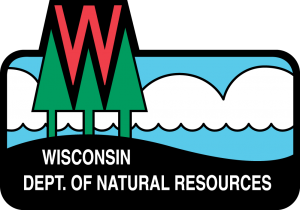
For the past four years Jason Granberg has been managing the invasive species control program funded by the Great Lakes Restoration Initiative at the Wisconsin Department of Natural Resources. These projects include control of non-native Phragmites, reed sweet mannagrass, giant hogweed, and hairy willowherb. He has led collaborations between the Department, regional governments, and with thousands of private landowners to plan for control work. To compliment control planning, he has developed several geospatial models focused on invasive species including the Invasive Species Archive, a database of over 114,000 records; adapted the Priority Areas for Invasive Species Management for use in Wisconsin; and modelled the potential spread of invasive species due to climate change. He continues to collaborate with faculty at the University of Wisconsin-Madison on the development ecological models and platforms for sharing invasive species records.
Jason Hill
Manager of Conservation Programs, Ducks Unlimited, Inc. jhill@ducks.org
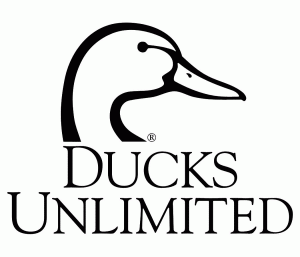
Jason Hill currently serves as the Manager of Conservation Programs at Ducks Unlimited, Inc. (DU), a nonprofit organization devoted to conserving, restoring, and managing wetland and associated habitats for North America’s waterfowl. As Manager of Conservation Programs, Jason is responsible for DU conservation programs in the Great Lakes, including project planning and management, wetland restoration and associated upland habitat delivery, and land and easement acquisition. He has worked for DU since 2000 in various DU priority areas across the Great Lakes states and is responsible for project management, wetland design and permitting, construction management, and native prairie establishment. Additional responsibilities include fundraising, wetland policy efforts, and supervision of biological staff responsible for Ohio, Michigan, and Wisconsin conservation programs. Both his bachelor’s and master’s were conferred through Michigan State University’s Department of Fisheries and Wildlife.
Linda Nelson
Assistant Technical Director for Civil Works Environmental Engineering and Sciences, U.S. Army Engineer Research and Development Center linda.s.nelson@usace.army.mil

Linda Nelson is the Assistant Technical Director for Civil Works Environmental Engineering and Sciences, at the U.S. Army Engineer Research and Development Center (ERDC). She is a member and past President of the Aquatic Plant Management Society, was the aquatics representative on the Board of Directors for the Weed Science Society of America, and currently represents the ERDC on the USACE Invasive Species Leadership Team. Linda serves on the Great Lakes Phragmites Collaborative Advisory Committee. Additionally, Nelson is an Adjunct Professor in the Plant and Soil Science Department at Mississippi State University and serves on the Mississippi Weed Science Committee (Aquatics), Mississippi State Agricultural Extension. Linda also serves as Program Manager for the Aquatic Plant Control Research Program and the Aquatic Nuisance Species Research Program. Previously, she was a Plant Physiologist and researched chemical techniques for managing invasive vegetation. Linda has a Doctorate in Botany/Weed Science from Purdue University.
Greg Norwood
Invasive Species Coordinator, Michigan Department of Natural Resources – Wildlife Division norwoodg@michigan.gov
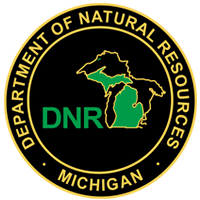
Greg Norwood is the Invasive Species Coordinator for the Michigan Department of Natural Resources – Wildlife Division and previously served for ten years as a biological technician and wildlife biologist with the Detroit River National Wildlife Refuge. He has formerly managed Phragmites at Crosswinds Marsh Wetland Interpretive Preserve for Wayne County. As a wildlife biologist, Greg championed extensive Phragmites control in collaboration with local researchers and stewardship organizations along western Lake Erie marshes of highest conservation value. The partnerships and stakeholder engagement resulted in the Detroit River-Western Lake Erie Cooperative Weed Management Area which provided resources to restore these special places. Greg recognizes the importance of developing long-term plans that include appropriate stakeholder engagement, defining broadly desired environmental outcomes, setting of meaningful thresholds, and sufficient monitoring to improve management over time. He holds degrees in biology from the University of Michigan-Dearborn and Eastern Michigan University.
Dr. Rebecca Rooney
Assistant Professor, Department of Biology, University of Waterloo rrooney@uwaterloo.ca
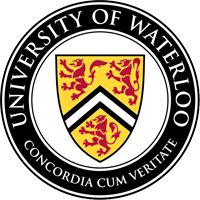
An Assistant Professor in the Department of Biology at the University of Waterloo, Dr. Rebecca Rooney studies wetland ecology and is a world expert on biomonitoring and wetland assessment. Dr. Rooney examines how human-caused and natural disturbances, like invasion by Phragmites australis, influence wetland communities. Additionally, she studies the efficacy and effects of different Phragmites control methods, particularly the influence of pesticides on wetland food webs. She tackles fundamental questions around how communities assemble and what defines them, including the relative importance of biological interactions, environmental conditions, and landscape factors. Her research supports the implementation of wetland policy, invasive species management, and the protection of species at risk. Her results improve the design of restored and reclaimed wetlands, provide tools for evaluating their integrity, and identifies the most successful techniques for invasive species control.
Bobbie Webster
Natural Areas Ecologist, Cofrin Center for Biodiversity, University of Wisconsin—Green Bay websterb@uwgb.edu
Bobbie Webster assists in managing over 1,200 acres of natural areas as an employee of the Cofrin Center for Biodiversity and in collaboration with the Department of Facilities Management. She coordinates invasive species control, trail maintenance, ecological restoration, biological monitoring, signage, and other activities consistent with management plans. She also works with students, faculty, and volunteers on research projects and field trips conducted on the UW-Green Bay natural areas. Bobbie has considerable experience working in land management, including monitoring and managing Phragmites, with previous positions with The Door County Land Trust, The Nature Conservancy, and WI DNR. She is currently coordinating a project monitoring efficacy of different Phragmites treatments and comparing their effects on plant and microbial communities in northeastern Wisconsin. She received both her master’s in Natural Resources and her bachelor’s in Public Administration and Policy Analysis, Political Science, and Resource Management from the University of Wisconsin—Stevens Point.
Bob Williams
Director
Stewart Farm Ecology Center
xharpspah@aol.com
Bob Williams is the Director of the Stewart Farm Ecology Center on Harsens Island and has successfully controlled Phragmites while restoring a lakeplain prairie, wet mesic flatwoods and a Great Lakes marsh at Stewart Farm. He is a graduate of the Michigan State University Conservation Stewards Program and an MSU Extension Service Volunteer. He founded and manages www.Phragmites.org and served for three years as the Chairperson of the Clay Township Phragmites Advisory Board. Bob has trained over 1000 individuals as well as presented dozens of public workshops on Phragmites control for local communities, non-profits, and organizations such as the Wildlife Habitat Council, The Stewardship Network, SEMCOG, MSU Extension Service, and the Great Lakes Commission. In 2011, Bob and his wife Sue were named Michiganians of the year by the Detroit News for their work in environmental stewardship. Bob is also a registered architect and practices in the State of Michigan.
Tom Arbour
Natural Resources Administrator, Ohio Department of Natural Resources Thomas.Arbour@dnr.state.oh.us
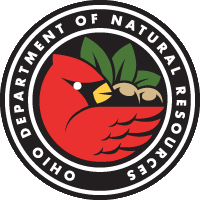
During his involvement in PAMF’s TWG, Tom Arbour worked as a researcher with the Ohio Department of Natural Resources (DNR) Division of Natural Areas and Preserves. However, he recently accepted a new position as a Natural Resources Administrator with the Ohio DNR Division of Parks and Watercraft, and, unfortunately, is unable to remain involved given his new set of responsibilities. He has extensive invasive species experience, and has worked to preserve native plant communities threatened by species like invasive Phragmites. His specialties include geographic information systems and analysis, cartography, invasive species, botany, and ecology. Tom holds a bachelor’s from Hiram College and a master’s in Environmental Science from Miami University.
Jake Bonello
Directorate Resource Fellow, US Fish and Wildlife Service, Klamath Basin National Wildlife Refuge Complex Jake_bonello@fws.gov
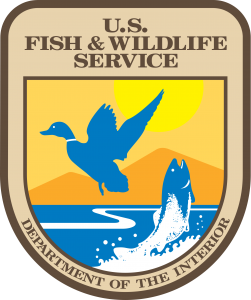
Jake Bonello played an integral role in PAMF’s development, but he recently accepted another position that keeps him from being involved in the Technical Working Group. His experience with Phragmites comes from 5 years at the Detroit River International Wildlife Refuge, where he was the lead technician for the Detroit River – Western Lake Erie Cooperative Weed Management area. Over the course of his time at the Refuge, he led the crew to map and treat invasive species on Refuge land as well as land owned by partners like the Huron Clinton Metroparks Authority. He has since moved to California to develop an invasive species monitoring program for the Klamath Basin National Wildlife Refuge Complex. He plans on returning to Michigan in the fall of 2018 to finish his graduate thesis looking at native plant response to Phragmites management in Lake Erie wetlands.
Technical Working Group Partners
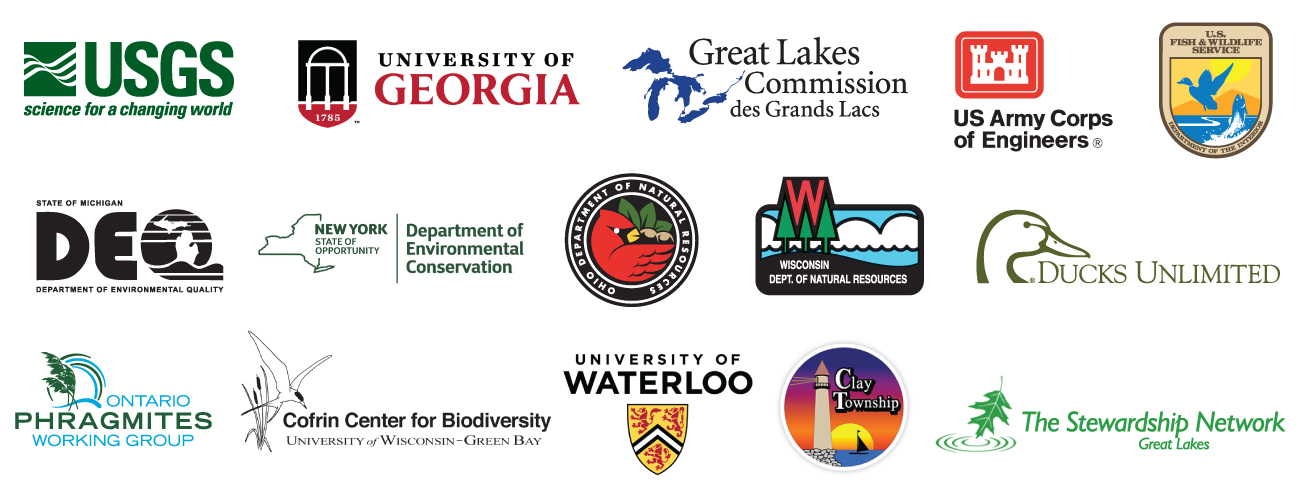
Technical Working Group Partners
spac


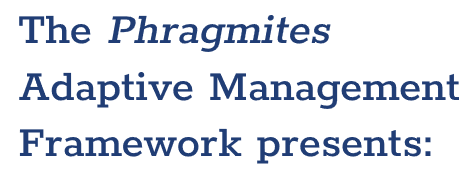
Join PAMF
Anyone managing non-native Phragmites in the Great Lakes basin can participate in PAMF. Click the button below to get started!
Questions?
Please contact: Samantha Tank, Great Lakes Commission at pamf@glc.org



